Chorzów-Silesian Voivodeship 作者: 来源: 发布时间:2021-10-22
Ⅰ. Population and Area
Population (31 December 2019)
• City 107,807 Decrease (36th)
• Urban 2,746,000
• Metro 4,620,624
Area
• City 33.24 km2 (12.83 sq mi)
Website https://chorzow.eu/
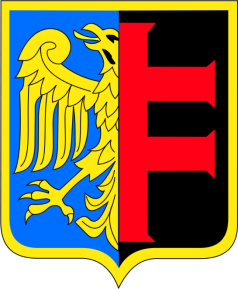
Ⅱ.Natural Geography (environment and resources)
-Location
-Chorzów is in the middle of the largest urban center in Poland. The recently (2007) formed Upper Silesian Metropolitan Union is the largest legally recognized urban entity in Poland with a population of 2 million.
-Nine million people live within 100 kilometres (62 miles) of Silesian Stadium in Chorzów. Six European capitals are located within 600 km (373 mi): Berlin, Vienna, Prague, Bratislava, Budapest and Warsaw.
-Climate
-The average annual temperature in Chorzów is 7.9 °C (46.2 °F). The annual precipitation is 723 mm (28 in). Weak West winds (less than 2 m/s) prevail.
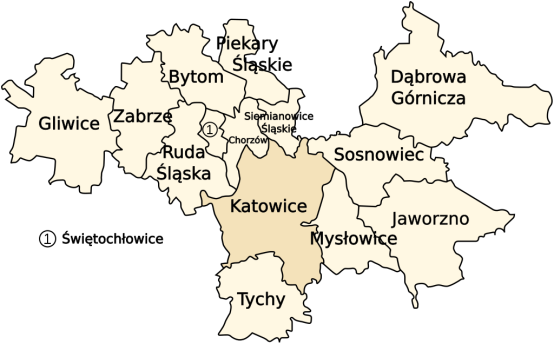
-Transport
-Car:
-Freeway A4: from German Autobahn A4 at Görlitz/Zgorzelec to Wrocław-Gliwice-Chorzów (Batory)-Katowice-Kraków (and towards Ukraine)
-Express Route (DTŚ): Katowice-Chorzów-Ruda Śląska-Zabrze
-National Route DK79: Katowice-Chorzów-Bytom
-Three railway stations on two major routes:
-Katowice-Chorzów Batory-Gliwice
-Katowice-Chorzów Batory-Chorzów Miasto-Chorzów Stary-Bytom
-Air:
-Katowice International Airport
-Public transport:
-Chorzów is well connected within the Upper Silesian Metropolitan Union with Bus lines and tram lines. Silesian Interurbans is one of the largest streetcar systems in the world, in existence since 1894. The system spreads for more than 50 km (31 mi) (east-west) and covers the following cities: Będzin, Bytom, Chorzów, Czeladź, Dąbrowa Górnicza, Gliwice, Katowice, Mysłowice, Ruda Śląska, Siemianowice Śląskie, Sosnowiec, Świętochłowice, and Zabrze.
Ⅲ.Economy
-Chorzów used to be one of the most important cities in the largest Polish economic area (the Upper Silesian Industry Area) with extensive industry in coal mining, steel, chemistry, manufacturing, and energy sectors. Many heavy-industry establishments were closed or scaled down in the last two decades because of environmental issues in the center of a highly urbanized area, and also because of decades-long lack of investment. Others were restructured and modernized. Wedged between a dozen of other cities, the population has been decreasing. The city character has been evolving towards the service economy as new industrial development takes mostly place at the border of the Upper Silesian Metropolitan Union. The Unemployment rate is high (12.6% on 2007-12-31) but decreasing; the workforce is generally highly technically skilled.
-Major industrial establishments are:
-Huta Batory – steel
-Huta Kościuszko SA – steel
-Chorzów Power Station
-Zakłady Chemiczne Hajduki SA – carbochemistry
-Zakłady Azotowe SA – nitrogen fixation and methanol
-Alstom-Konstal – transport manufacturing and construction
-KWK Polska Wirek, rejon Prezydent – coal mine
-ProLogis – logistics
-Messer – technical gases
-Chorzów - Wikipedia https://en.wikipedia.org/wiki/Chorz%C3%B3w#Economy
-2018 Chorzów Budget
-On December 20, the councilors voted the draft budget resolution. The next year's budget assumes revenues in the amount of almost PLN 700 million, and expenses in the amount of over PLN 754 million. The budget deficit will be covered by the EIB loan and free funds from 2018. - The draft budget for 2019 has been positively assessed by the Regional Audit Chamber in Katowice, and the good financial condition of the city has been confirmed by the international rating agency Fitch - notes Małgorzata Kern, City Treasurer. The loan funds will be used to finance investments, which in 2019 account for PLN 168 million. The most important of them include: completing the reconstruction of the Market Square and modernization of the school and swimming pool in Primary School No. 5. The plans also include new projects such as the creation of the Metallurgy Museum, adaptation of the former hospital building at Karola Miarka Street for housing purposes and modernization of the stadium at Cicha Street.
-Chorzów City Hall | Chorzów sets in motion https://mieszkancy.chorzow.eu/article/finanse#
Ⅳ.Industrial Characteristics
-Chorzów used to be one of the most important cities in the largest Polish economic area (the Upper Silesian Industry Area) with extensive industry in coal mining, steel, chemistry, manufacturing, and energy sectors.
-Key projects
-1. "CHORZÓW 60+" PROGRAM
-Program entitled "Chorzów 60+" is an element of the social policy conducted by the City of Chorzów.
-The aim of the "Chorzów 60+" program is to activate the seniors of Chorzów. This goal results from the national demographic trend, which results in an increasing number of elderly people and, consequently, the need to enrich the cultural and recreational offer dedicated to seniors.
-The goal will be achieved by collecting and advertising the offers of creative and active way of spending time addressed to city residents over 60 years of age. Such proposals are already included in the existing offer of municipal institutions and non-governmental organizations in Chorzów. The added value is the discount system proposed by the business partners of the program.
-https://mieszkancy.chorzow.eu/article/program-dobry-start
-2. 300 zlotys for "Dobry Start"
-Applications can be submitted from July 1, and residents of Chorzów have already sent over 600 applications. Recruitment to the "Dobry Start" program has started, under which parents and guardians of students will receive PLN 300 for a school layette. In Chorzów, the additional benefit will cover approximately 15,000 children. Applications can be submitted by the end of November, but it is not worth waiting for the last minute - submitting a complete application by the end of August is a guarantee of payment of the benefit by 30 September.
-Applications for the payment of the benefit can be submitted via the website of the Ministry of Family, Labor and Social Policy empatia.mrpips.gov (Emp @ tia portal) and via an online bank account, and from August 1 also via the traditional route. Residents of Chorzów will be able to submit paper-based applications at the Social Assistance Center in Chorzów, at ul. Racławicka 19, at the Department of Family Benefits and Benefits from the Alimony Fund, i.e. at the place of submitting applications for "Family 500+" benefits, as well as at the Municipal Cultural Center Batory, at ul. Stefana Batorego 6 and in the Social Integration Center at ul. May 3, 18.
-This benefit is due in connection with the beginning of the school year by a child or a person in education up to the age of 20, and in the case of presenting a disability certificate, up to the age of 24. Detailed information on the rules of using the benefit along with the application form is available on the website of the
-Chorzów City Hall | Chorzów sets in motion https://mieszkancy.chorzow.eu/article/program-dobry-start
Ⅴ.Attrations and Cityscape
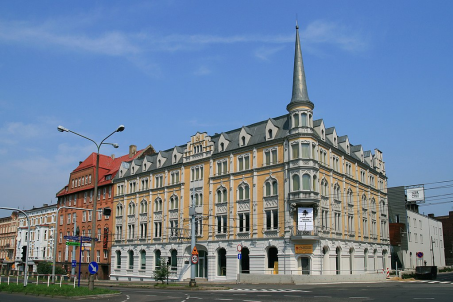
Teatr Rozrywki
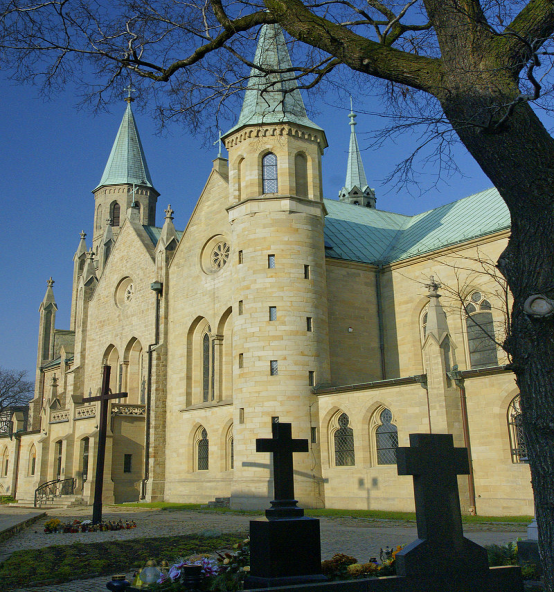
Selected historic churches, from the left: Saint Barbara's, Saint Mary Magdalene's, Saint Mary's, Saint Joseph's
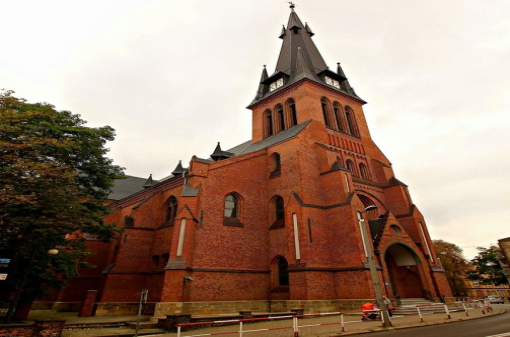
-The nationally known Silesian Central Park covers about 30% of the city area and features:
-Silesian Zoological Garden
-Silesian Stadium, the largest sports stadium in Poland
-Planetarium and Astronomical Observatory
-A large rose-exhibition garden (7 hectares, 385 varieties of roses)
-Legendia Theme Park
-Upper Silesian Ethnographic Park
-International Exhibition Grounds
-A swimming-pool complex
-A water sports center
-A tennis court complex
-Green areas
-Chorzów also features other notable nature areas, including:
-nature-landscape protected area "Żabie Doły" (at the border with Bytom and Piekary Śląskie),
-nature-landscape protected area of "Uroczysko Buczyna" (at the border with Katowice and Ruda Śląska),
-aquatic complex "Amelung".
Ⅵ.History and Culture
-City name
-The city of Chorzów was formed in 1934–1939 by a merger of 4 adjacent cities: Chorzów, Królewska Huta, Nowe Hajduki and Hajduki Wielkie. The name of the oldest settlement Chorzów was applied to the amalgamated city.
-The etymology of the name is not known. Chorzów is believed to be first mentioned as Zversov or Zuersov in a document of 1136 by Pope Innocent II as a village with peasants, silver miners, and two inns. Another place-name likely indicating Chorzów is Coccham or Coccha, which is mentioned in a document of 1198 by the Patriarch of Jerusalem, who awarded this place to the Equestrian Order of the Holy Sepulchre of Jerusalem. Chorzów is then mentioned as Chareu or Charev in 1257 and then Charzow in 1292. The last name may originate from the personal name Charz, short for Zachary and may mean Zachary's place. The a in the early names may have been later modified to the current pronunciation with o perhaps due to similarity to the common adjective chory=ill and a presence of a hospital (which was moved in 1299 to Rozbark at the gates of Bytom). Today, the place of the old village is a subdivision called Chorzów III or Chorzów Stary = the Old Chorzów.
-The industrial and residential settlement south-west of Chorzów constructed since 1797 around the Royal Coal Mine and Royal Iron Works was named Królewska Huta by the Poles or Königshütte by the Germans, both names meaning Royal Iron Works. As it was growing quickly this settlement was granted city status in 1868. Today this neighbourhood is called Chorzów I or Chorzów-Miasto meaning Chorzów Centre.
-The etymology of Hajduki is ambiguous and is interpreted as either related to the German word for moorland (German: die Heide), or adopted from the German/Polish/Silesian term for hajduk(s) (Polish (plural): Hajduki; German (singular): Heiduck), which locally meant bandits. The place was first mentioned in 1627 as Hejduk and shown on 18th century maps as "Ober Heiduk" and "Nieder Heiduk" (i.e., Upper and Lower Heiduk). The later names Hajduki Wielkie and Nowe Hajduki mean Great Hajduks and New Hajduks, respectively. The two settlements were merged in 1903 and named after the Bismarck Iron Works Bismarckhütte. When the international borders shifted, the name of Bismarck was replaced with the name of the Polish king Batory (so-chosen to preserve that initial "B", which appeared on an economically important local trademark). Today this city subdivision is called Chorzów IV or Chorzów-Batory.
-From 12th century to World War I
-Village of Chorzów
-In the 12th century, the castellany of Bytom, including the Chorzów area, belonged to the Seniorate Province (Kraków Duchy) of Poland. In 1179 it was awarded by Duke Casimir the Just to the Duke of Opole, and since that time the history of Chorzów has been connected to the history of Upper Silesia (Duchy of Opole).
-The oldest part of the city, the village of Chorzów, today called Chorzów Stary, belonged since 1257 to the Equestrian Order of the Holy Sepulchre of Jerusalem. Already at that time silver and lead ores were mined nearby, later also the ores of iron. There is more documentation for 16th century developments.
-From 1327, the Upper Silesian duchies were ruled by the dukes of the Piast dynasty and were subject to Bohemian overlordship. The Crown of Bohemia elected Polish-Lithuanian Jagiellons kings from 1471 and Austrian Habsburgs kings after 1526. In 1742, the area was conquered by the Prussian Hohenzollerns in Silesian Wars, setting the stage for the Prussian industrial might. The Prussian and then German period lasted for about 180 years and overlapped with the time of rapid industrialization.
-Royal iron works, coal mines and chemistry
-With the discovery of bituminous coal deposits at the end of the 18th century by the Polish local priest Ludwik Bojarski, new industrial sectors developed in the Chorzów area. In the years 1791–1797 the Prussian state-owned Royal Coal Mine was constructed (Kopalnia Król, Königsgrube, later renamed several times with the changing political winds). In 1799, first pig iron was made in the Royal Iron Works (Królewska Huta, Königshütte). At the time, it was a pioneering industrial establishment of its kind in continental Europe. In 1819 the ironworks consisted of 4 blast furnaces, producing 1,400 tons of pig-iron. In the 1800s the modern Lidognia Zinc Works was added in the area. In 1871 the ironworks were taken over by the holding called Vereingte Königs- und Laurahütte AG für Bergbau und Hüttenbetrieb, which added a steel mill, rail mill and workshops. In the vicinity of the Royal Coal Mine, Countess Laura Coal Mine was opened in 1870, and by 1913–1914 coal production increased to 1 million tons a year. In 1898, a thermal power plant was commissioned which was, until the 1930s, the biggest electricity producer in Poland with a power of 100 MW (electrical). Today, it operates as "ELCHO". In 1915, nitrogen chemical works (Oberschlesische Stickstoffwerke) were built nearby to produce fertilizers and explosives by newly invented processes: from the air, water and coal (see Haber-Bosch process). Today, it operates as "Zakłady Azotowe SA".
Królewska Huta: from village to city
-Settlements grew near the new coal and ironworks. Since 1797, one group of settlements was called Königshütte (Królewska Huta in Polish) after the ironworks. In 1846 Królewska Huta received a railway track to Świętochłowice and Mysłowice, in 1857 to Bytom and till 1872 to all major cities in the Silesian region. Królewska Huta received city status in 1868 as part of Bytom County, and in 1898 it was made a separate city-county.
-The population of Królewska Huta was increasing rapidly: from 19,500 inhabitants in 1870 to 72,600 in 1910. Among them 17,300 workers were employed in the industry (similar number for 1939). The population spoke mostly Polish or German.[citation needed]
-Hajduki Wielkie suburb
-In the village of Hajduki Wielkie, just south of Chorzów and Królewska Huta, Bismarck Iron Works (Bismarckhütte), were opened in 1872, later called Bathory Iron Works (Huta Batory). A large carbochemical plant was started in 1889, the first such chemical plant in what was to later become the Polish state. Today the company operates as "Zakłady Koksochemiczne Hajduki SA".
-Polish community
-Towards the end of 19th century, Chorzów experienced a revival of Polish national feelings. Ethnic tensions were mixed with the religious and class conflicts. Karol Miarka was the editor of Polish books and newspapers including Katolik (The Catholic) published in Królewska Huta since 1868, Poradnik Gospodarski (Economic Advisor) since 1879. He was also the founder of several organizations: Upper Silesian Union, Upper Silesian Peasants Union. Juliusz Ligoń was a Polish activist and poet. In 1920 the football club Ruch Chorzów was founded in the city. Later on, it would become one of the most successful Polish football teams.
-Interwar Poland (1922–1939)
-Chorzów in the 1930s
-In the Upper Silesia plebiscite a majority of 31,864 voters voted to remain in Germany while 10,764 votes were given for Poland Following three Silesian Uprisings, the eastern part of Silesia, including Chorzów and Królewska Huta, was separated from Germany and awarded to Poland in 1922. Migrations of people followed. Because of its strategic value, the case of the nitrogen factory Oberschlesische Stickstoffwerke was argued for years before the Permanent Court of International Justice, finally setting some new legal precedences on what is "just" in international relations. In 1934, the industrial communities of Chorzów, Królewska Huta and Nowe Hajduki were merged into one municipality with 81,000 inhabitants. The name of the oldest settlement Chorzów was given to the whole city. In April 1939, the settlement of Hajduki Wielkie with 30,000 inhabitants was added to Chorzów.
-In part due to the German-Polish trade war in the 1920s, the industry of Chorzów, a border city at that time, stagnated until 1933. In 1927, a division of Huta Piłsudski was separated into a company making rail cars, trams and bridges; today it operates as Alstom-Konstal. The State Factory of Nitrogen Compounds (Państwowa Fabryka Związków Azotowych) was in 1933 merged with a similar company (largely its copy) in Tarnów-Mościce.
-German occupation during World War II (1939–1945)
-On the day of the outbreak of World War II in September 1939, Chorzów was taken by Nazi Germany. Polish irregulars, mainly Silesian uprising veterans and Scouts, put up resistance to the regular German forces for three days, most of them were murdered in mass executions. Polish property was confiscated, and Chorzów (with the balance of Polish Silesia) was promptly re-incorporated into German Silesia (Preußische Provinz Schlesien, from 1941 Oberschlesien); the Upper Silesian industry being one the pillars of the Nazi Germany war effort. There were several enforced labor camps in Chorzów and, in years 1944–1945, two branches of the Auschwitz concentration camp. Chorzów was occupied by the Soviet Red Army in January 1945 with the subsequent persecution of many ethnic Polish Silesians and Germans.
-After 1945
-At the end of World War II, Chorzów (with the balance of Silesia) was re-incorporated into Poland. Generally, the Chorzów industry suffered little damage during World War II due to its inaccessibility to Allied bombing, a Soviet Army enveloping manoeuvre in January 1945, and perhaps Albert Speer's slowness or refusal to implement the scorched earth policy. This intact industry now played a critical role in the post-war reconstruction and industrialization of Poland. After the war, businesses were nationalized and operated, with minor changes, till 1989. Some were used as Soviet labour and concentration camps. Some industrial hardware and at least 100 000 Polish Silesians were deported to the Ukrainian Donbass region. At the "fall of communism" in 1989, the area was in decline. Since 1989, the region has been transitioning from heavy industry to a more diverse economy.
-On 28 January 2006, a roof collapsed at an exhibition hall, killing 65 people. See Trade hall roof collapse in Katowice, Poland.
-In 2007, Chorzów became a part of Upper Silesian Metropolitan Union, a voluntary union of a continuous chain of cities aimed at increasing the poor visibility of the area, improving its competitiveness, and modernizing the infrastructure.
-The region experienced several waves of migrations, including those commencing in 1945 (to Germany and from Poland and Ukraine), in 1971–1976 (to Germany), in 1982 (to Western countries), and from 2003 (to other countries of the EU).
Ⅶ.Other Information
-Chorzów is a city in Silesia in southern Poland, near Katowice. Chorzów is one of the central cities of the Upper Silesian Metropolitan Union – a metropolis with a population of 2 million. It is located in the Silesian Highlands, on the Rawa River (a tributary of the Vistula).
-Administratively, Chorzów is in the Silesian Voivodeship since 1999, previously Katowice Voivodeship, and before then, the Silesian Voivodeship. Chorzów is one of the cities of the 2.7 million conurbation – the Katowice urban area and within a greater Silesian metropolitan area with the population of about 5,294,000 people. The population within the city limits is 107,807 as of December 2019.
Ⅷ.Contact Information
Government
Mayor Andrzej Kotala
Miasto Chorzów - Miasto na Prawach Powiatu 41-500 Chorzów, ul.Rynek 1
Tel. 32 4165000
NIP: 627-273-38-08
REGON: 276255306
E-mail: urzad@chorzow.eu
